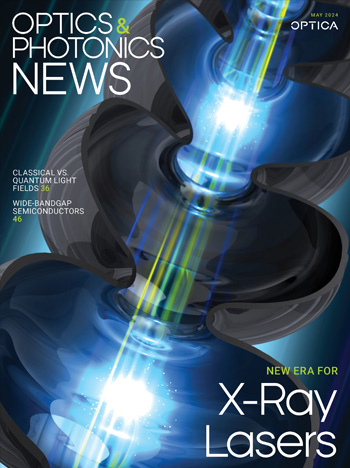
September 1992 Issue
Feature Articles
Photonics In Cable Television Systems
During the last decade, millions of miles of fiber optic cable and thousands of photonic components revolutionized the telecommunications industry. Digital long-haul systems, using single-mode fiber and simple Fabry-Perot lasers, offered unquestionable quality and bandwidth advantages over the antiquated microwave network. Yet in spite of the success of digital lightwave technology, the fidelity of even the finest early fiber links did not allow transmission of the complete video spectrum delivered by the cable television industry over coaxial cable.
by T. E. DarcieAdvanced Technology In Laser-Based Hand-Held Bar Code Scanners
A hand-held laser bar code scanner is an electro-optical system of modest complexity. The design and manufacture of laser-based hand-held bar code scanning equipment presents a challenging interdisciplinary system design task. Scanners must demonstrate state-of-the-art performance, high reliability, and exceptional ruggedness, and be designed for high volume manufacture at prices competitive in a world market.
by Jay M. Eastman and Anna M. QuinnOptical Symbols: Do They Exist?
A couple of weeks ago, I got a call from John Webb, the sales manager at Power Technology Inc. in Mabelvale, Ark. He was calling because he knew I was involved in optical standards of symbols to represent optical components. I assumed he was talking about the symbols we have in ISO 10110, the new optical drawing standard.
by Robert E. ParksPerception Is No Accident
Seeing is believing, right? Or is it? Look at Figure 1. To most people, the square region in the center looks brighter than the surrounding white area, but actually they're physically the same. To many, the square region appears to be a flat surface that sits above the rest of the figure and partially covers the lines. The illusory surface has clear illusory contours (edges) that delimit it. Figure 2 was created by adding lines that terminate at the same points as the lines in the first figure, one being added for each line in the first figure. But now the illusory surface and illusory contour are much weaker. Why? After all, the endpoints of the lines are still just as nicely lined up as the previous figure, there are still just as many points of contact to "guide" the illusory contour, and they are spaced apart in the same way as in the previous figure. In fact, since we have added more lines, we might reasonably expect the illusion to be strengthened instead of weakened.
by Marc K. Albert and Donald D. Hoffman
![Infinity Mirrored Room– Brilliance of the Souls 2014 by artist Yayoi Kusama. [© YAYOI KUSAMA]](https://opnmedia.blob.core.windows.net/$web/opn/media/images/articles/2024/0724/departments/202407-cover-web.jpg?ext=.jpg)
![An experimental scheme demonstrated by researchers at Princeton and Yale universities, USA, can convert physical noise into errors that can be corrected more easily. [F. Wojciechowski, Princeton University]](https://opnmedia.blob.core.windows.net/$web/opn/media/images/articles/2024/0624/departments/202406-cover-web.jpg?ext=.jpg)
